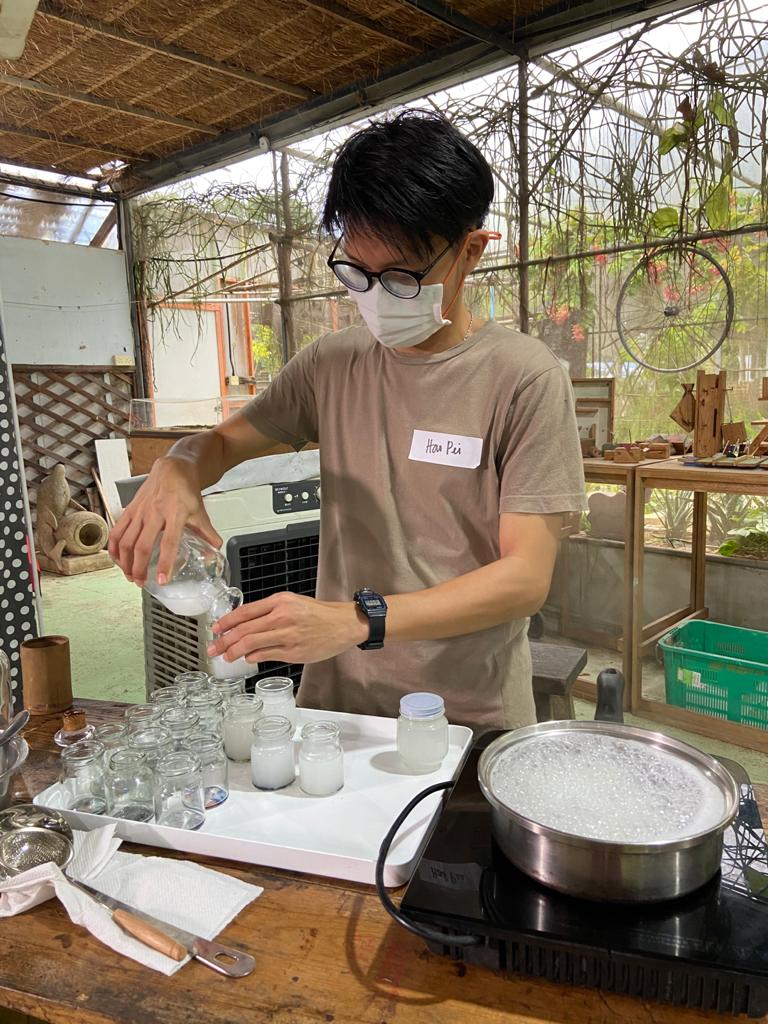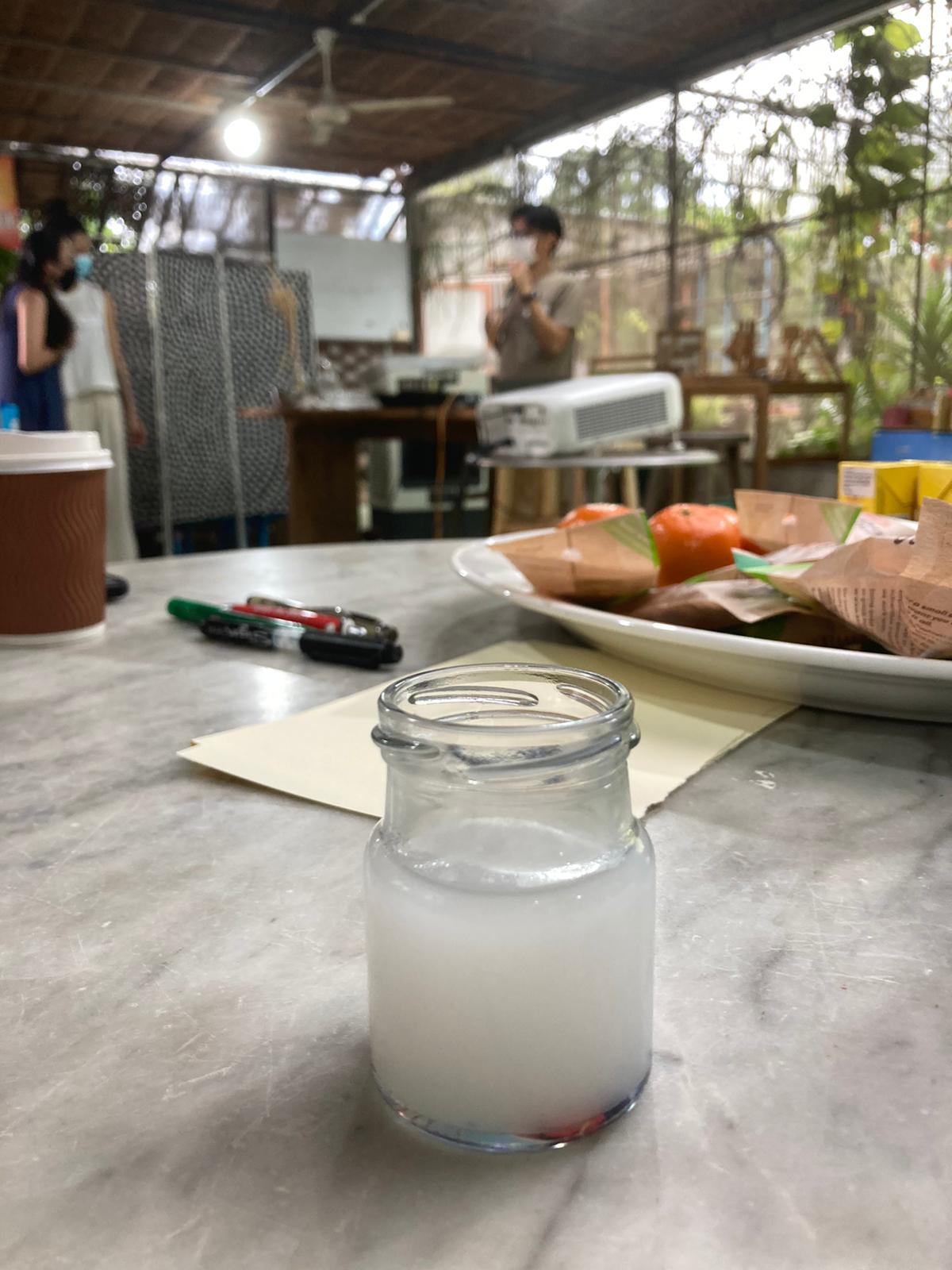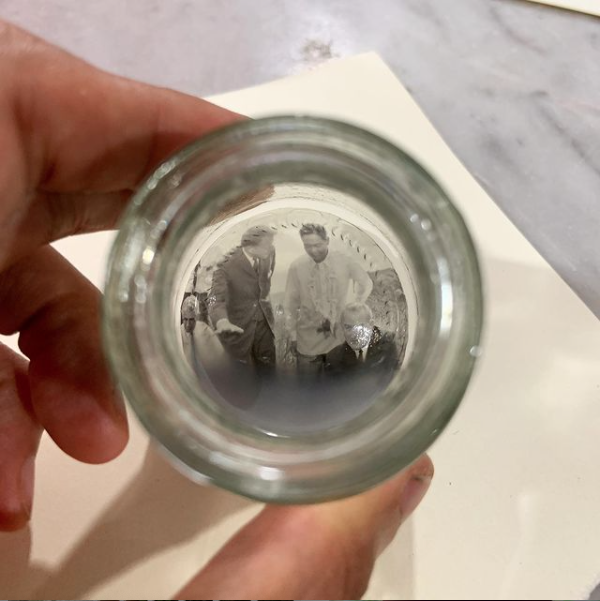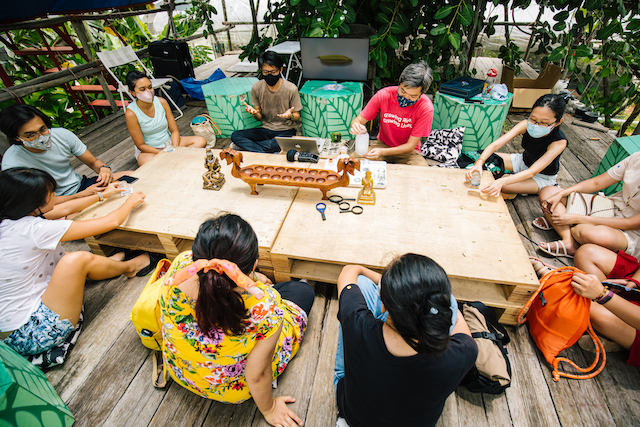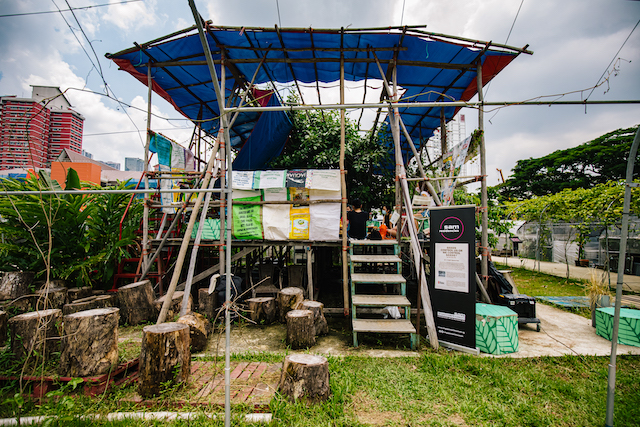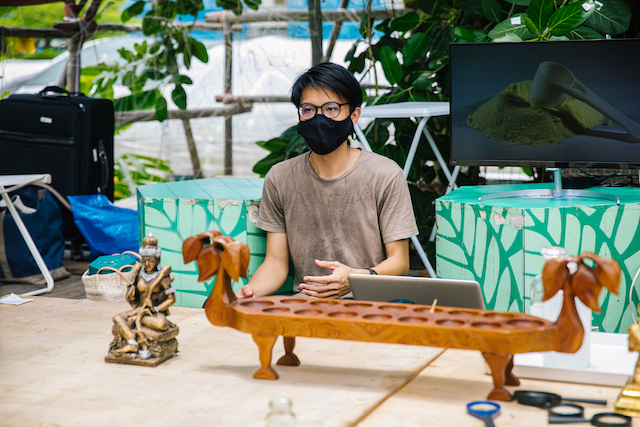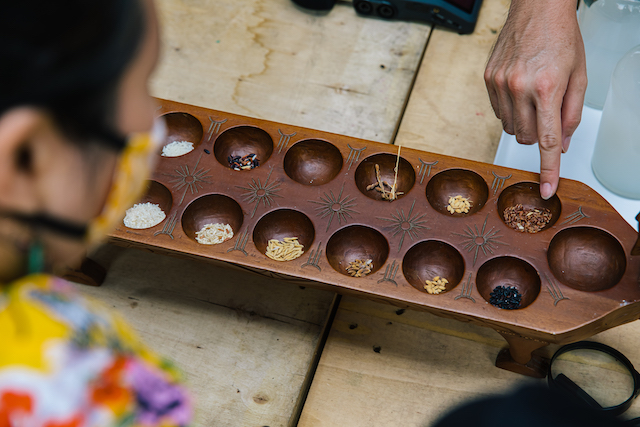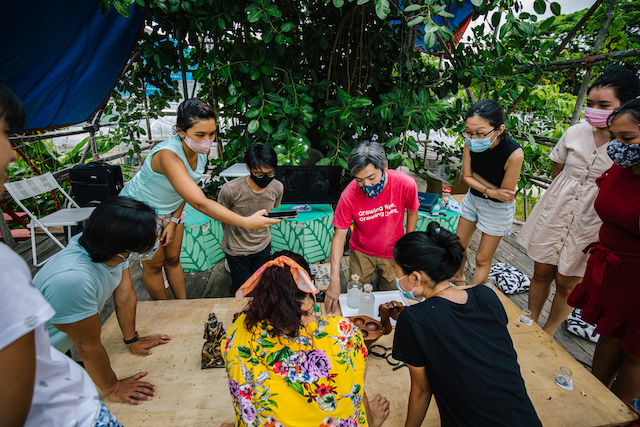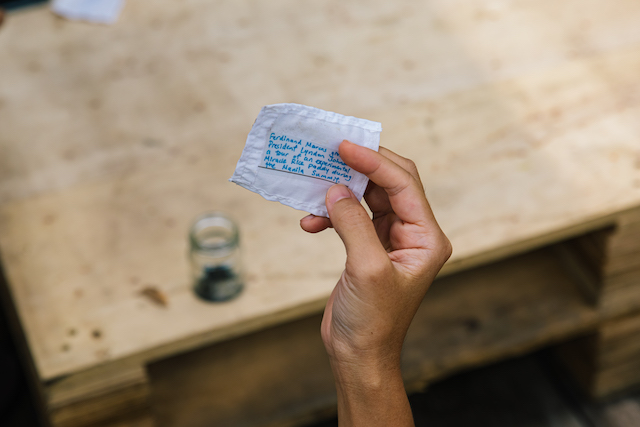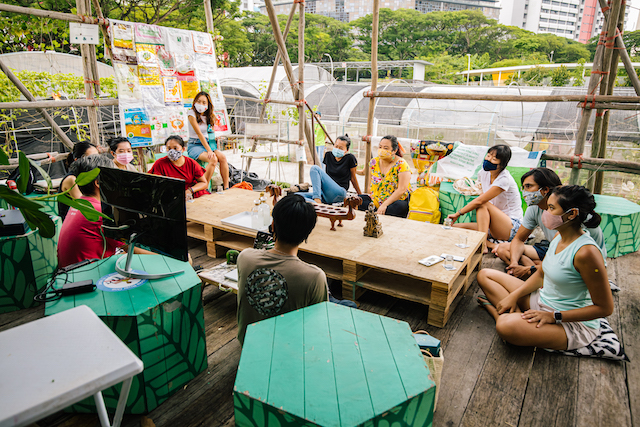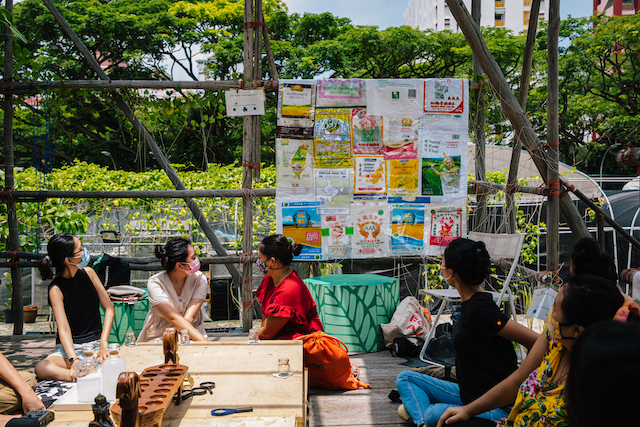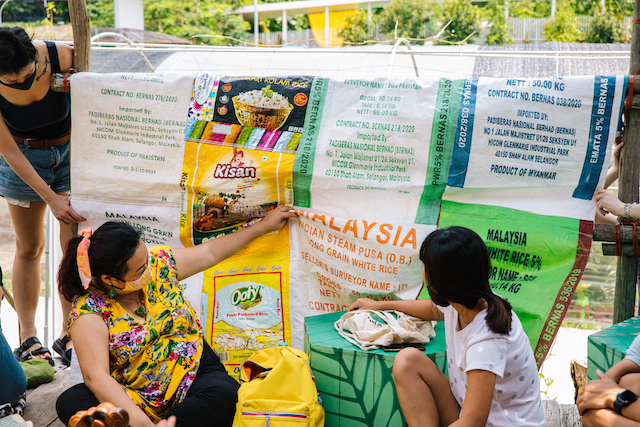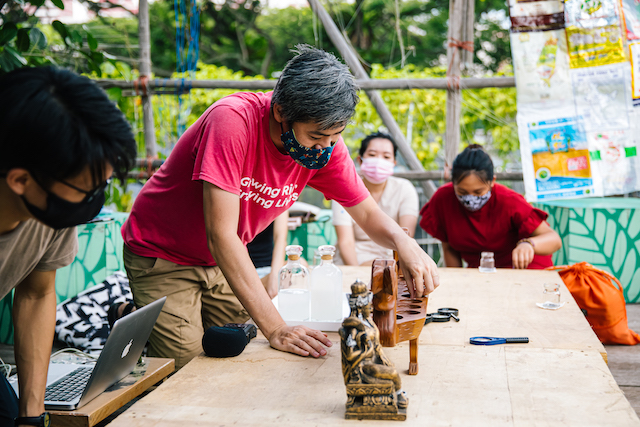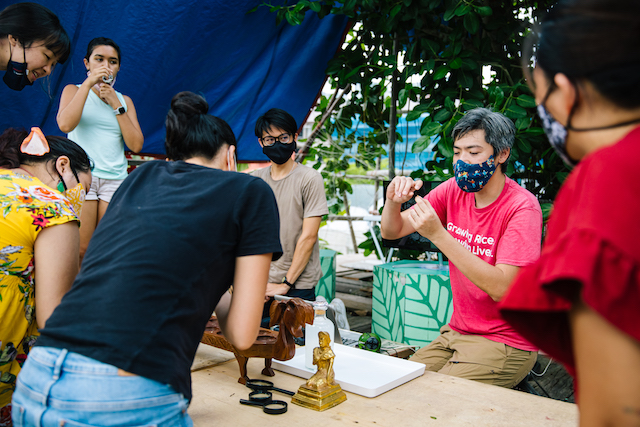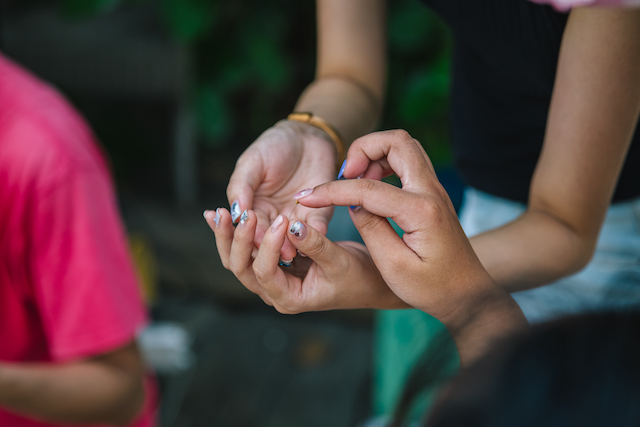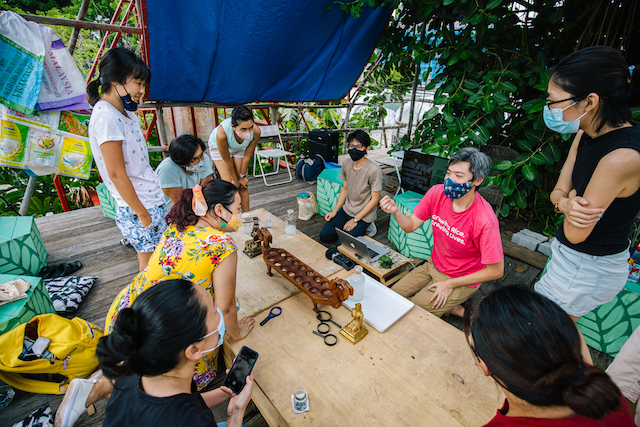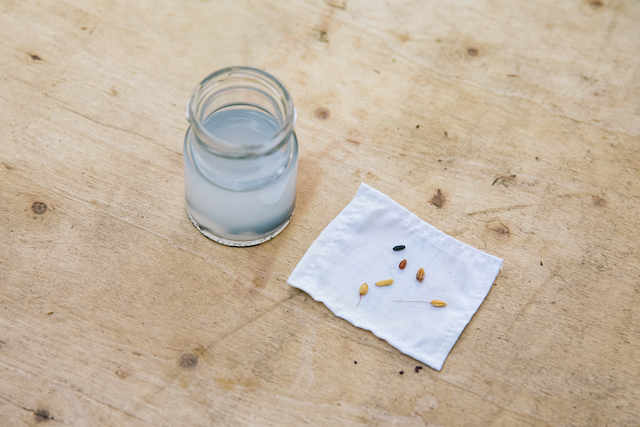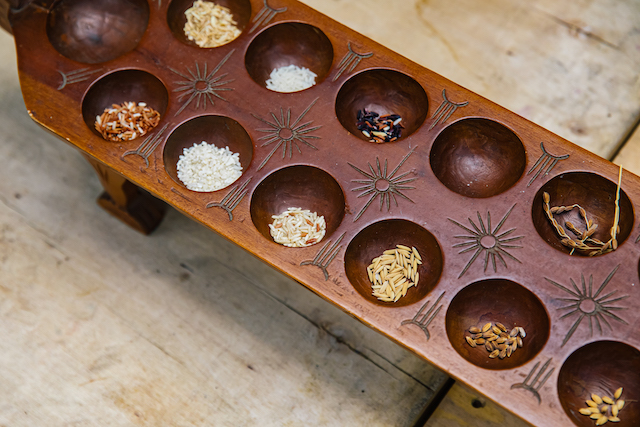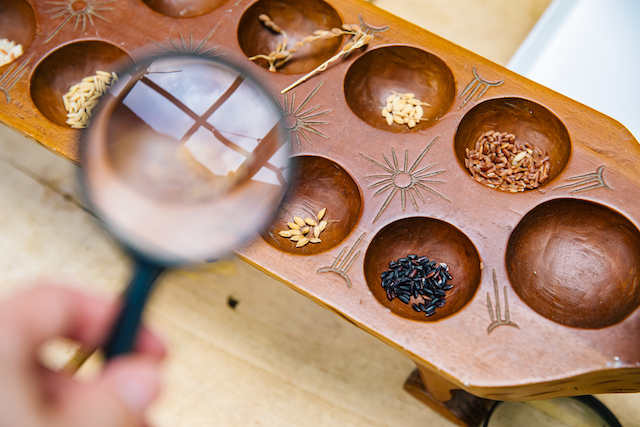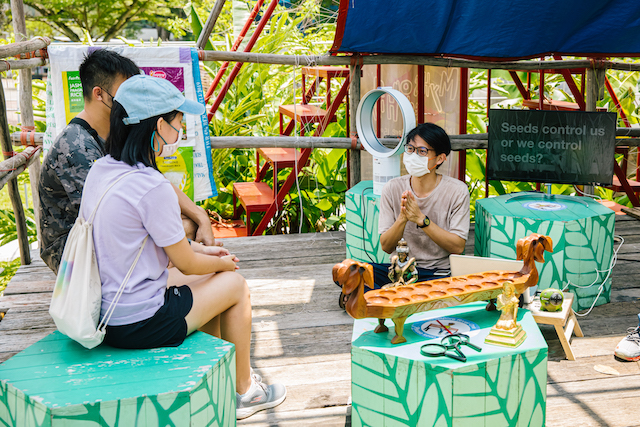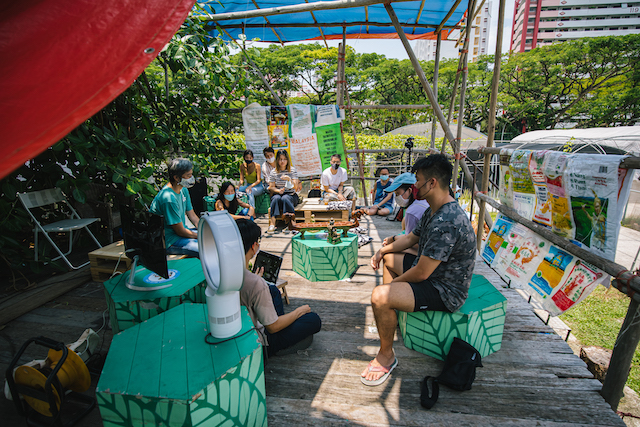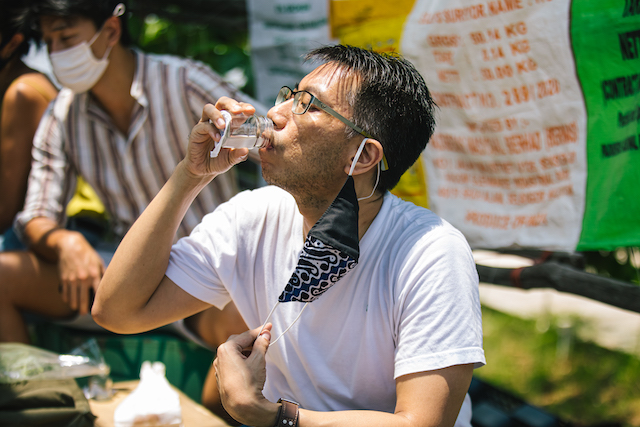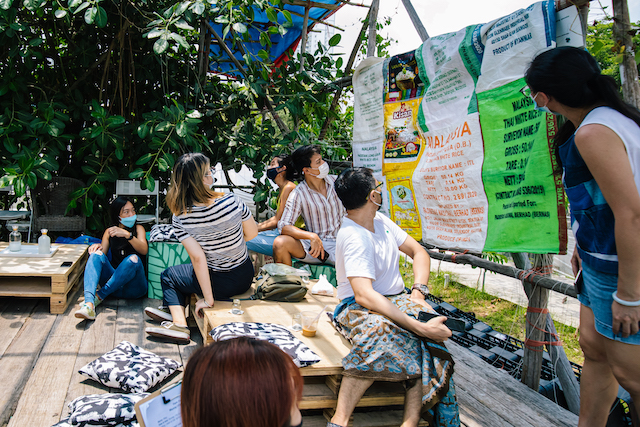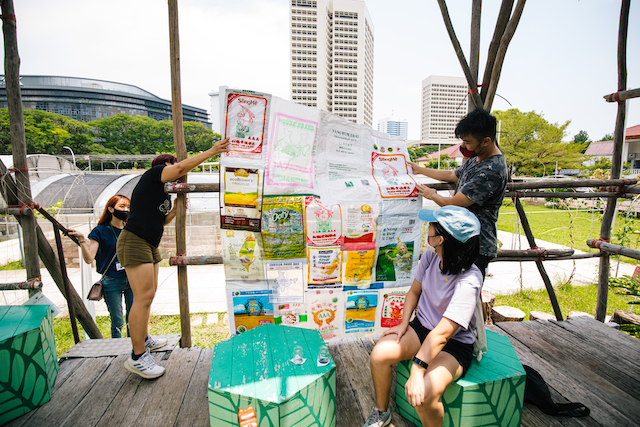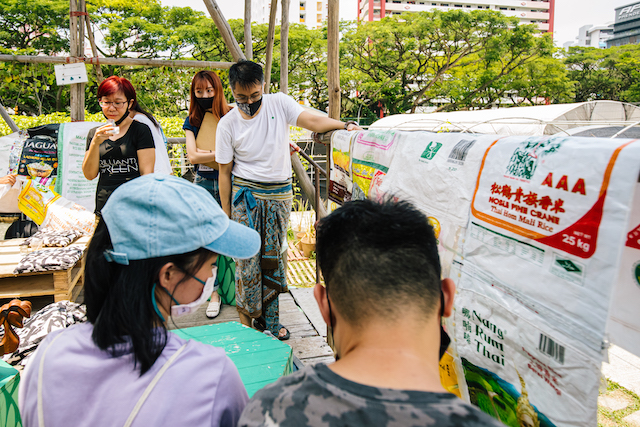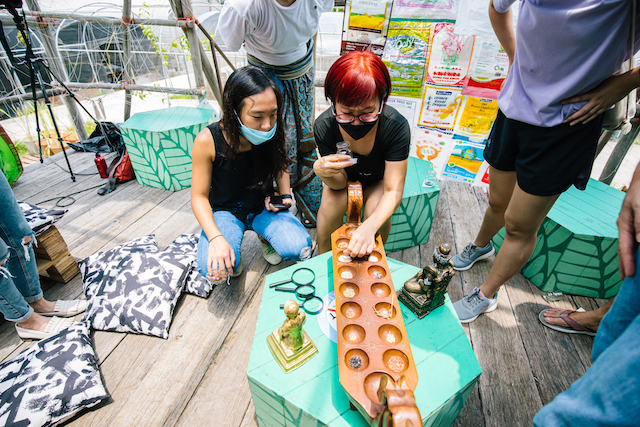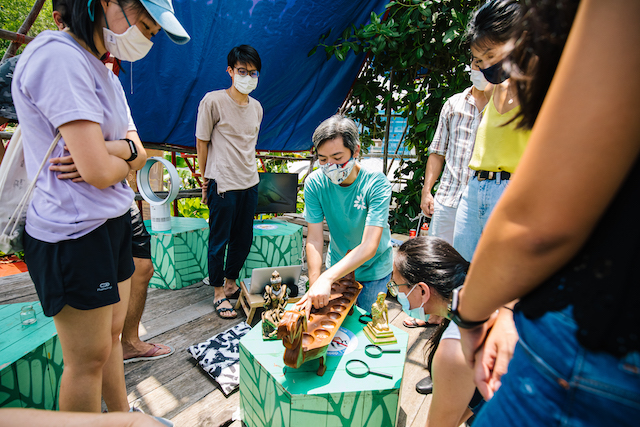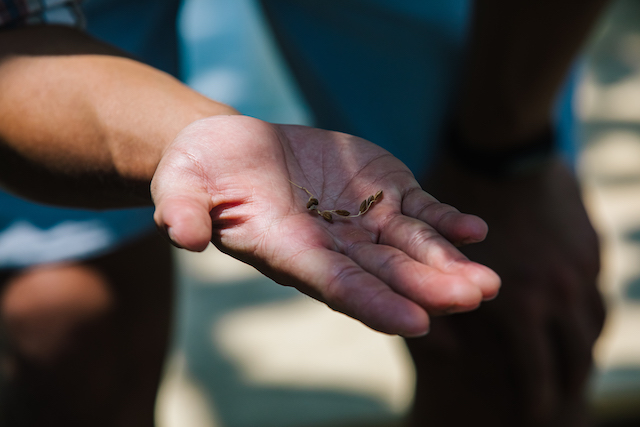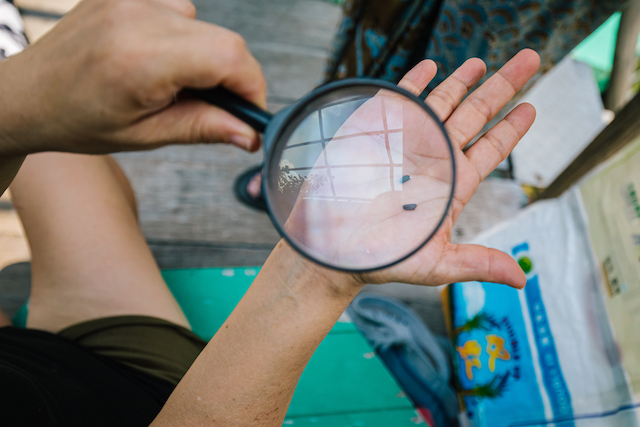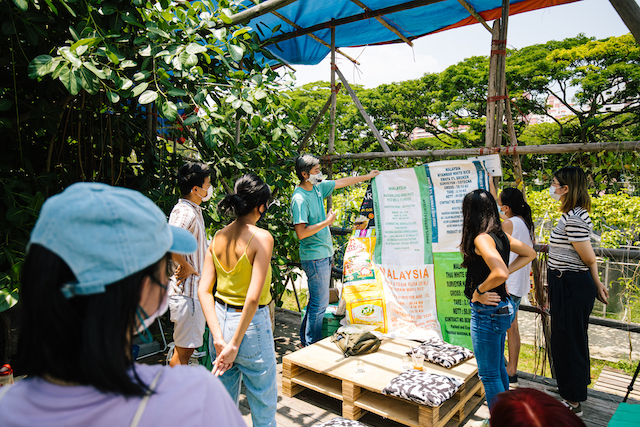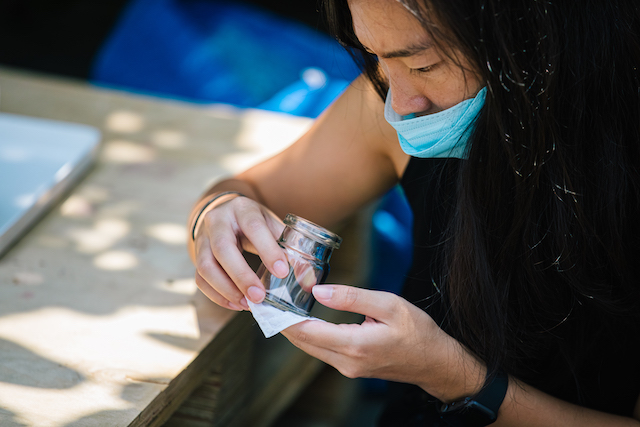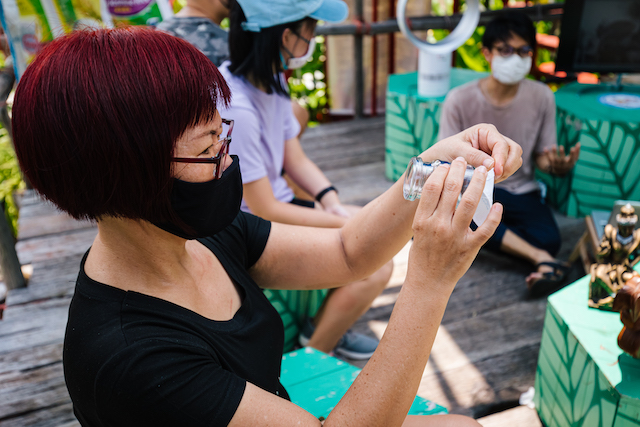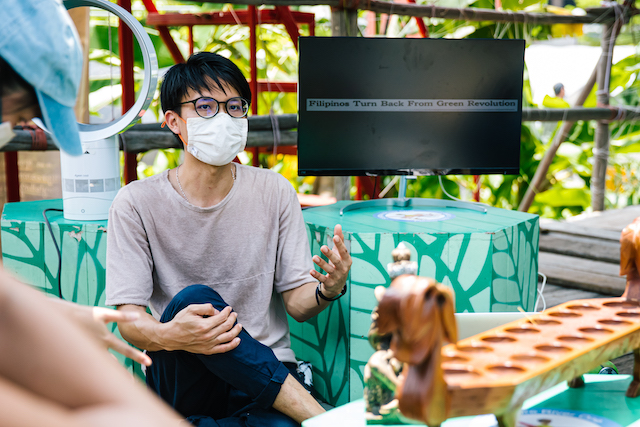Air Tajin (Rice Water): A
speculative disappearing recipe
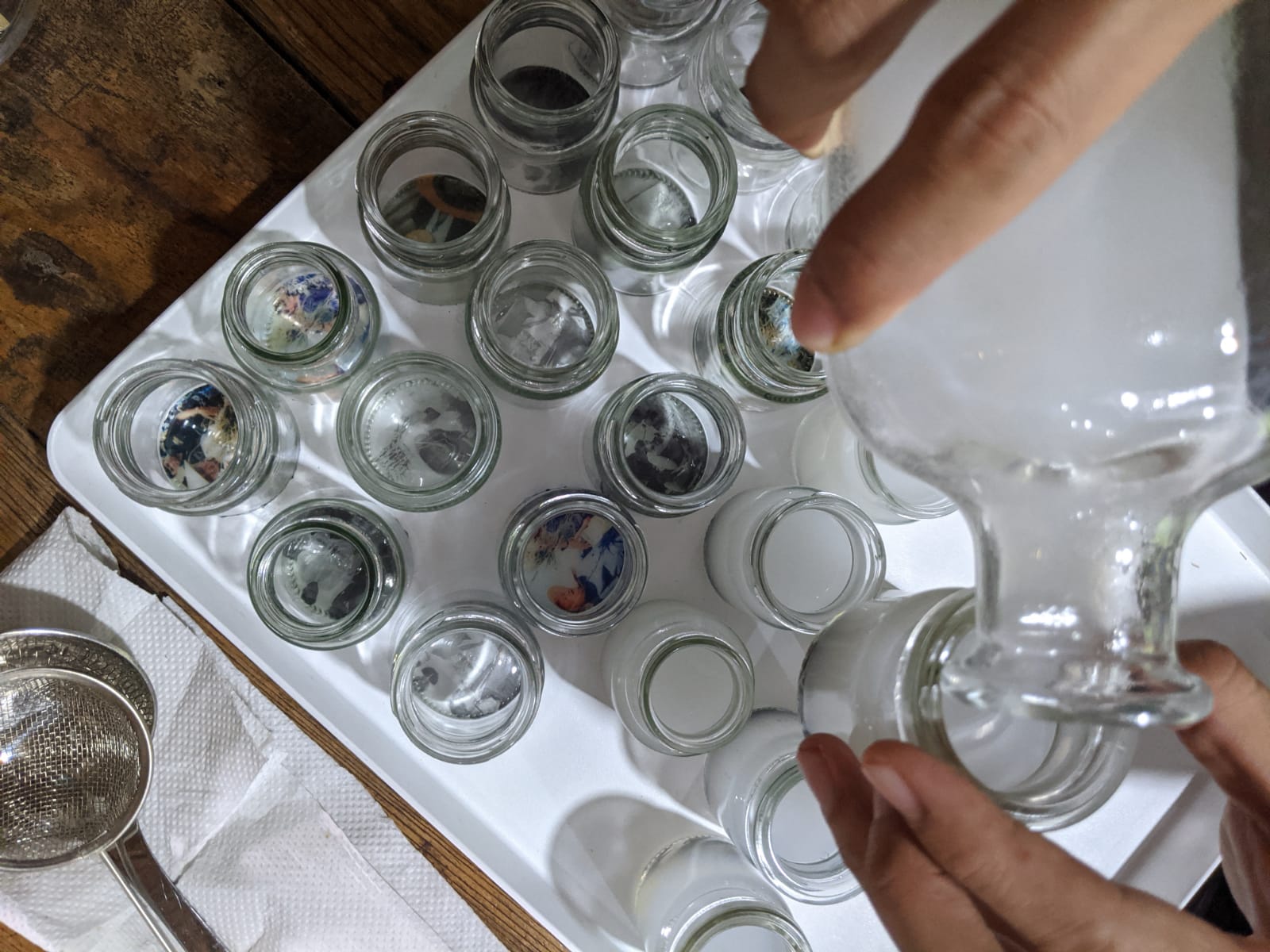
Serving Air Tajin (Rice Water) into bottles with customised stickers of selected political leaders from Southeast Asia. Image courtesy of Andrea Fam
Air Tajin (Rice Water): A speculative disappearing recipe
Chu Hao Pei
Over the course of the Singapore Art Museum Education & Community residency, I continue my long-term project inquiry on rice seed sovereignty. Looking past the troubled history, I began to examine Singapore’s relationship with rice beyond the consumption level and our perceptions of rice seed sovereignty in a non-agrarian society.
I first presented air tajin (cooked rice water) during a closed door Singapore Art Museum sharing session as part of an experimentation process where I began a narration based on a personal experience - how my mum cooked and gave me cooked rice water as a supplement drink as an infant. Like many in my generation or earlier, we grew up drinking cooked rice water because it is an age old drink that have served infants with well-needed nutrients.
In a two-day workshop, in collaboration with David Chen from The Little Rice Company, as part of Farm Day Out at City Sprouts, I decided to experiment with the speculative disappearing recipe of rice water as a starting point to probe into the issue of rice seed sovereignty. The diminishing use of cooked rice water as a nutritious drink for infants is often attributed to the shift in modern lifestyle practices, such as the switch to the more convenient rice cooker and the introduction of baby milk formula. But I would like to suggest a different theory: Could the disappearing recipe of rice water be the result of the introduction of genetically modified and hybrid seeds since the sixties? In my survey across Indonesia and Myanmar, many of the younger generation families, especially those in cities, have succumbed to the inevitable switch to baby milk formula, while the older generations lamented the loss of taste in current day rice grains.
Through the sharing of my research, seeded prompts and visual cues like the collected rice seeds and rice packages in the experimentation workshop, I was hoping to shed light on the disappearing native rice seeds in the region and the ongoing global movement of seed sovereignty, only to encounter fragmented conversations among the participants.
We attempted to recalibrate the workshop approach to a more open ended discussion on the topic and sharing of personal stories. However, owing to the disconnection to food production, the conversations naturally drove towards a consumer’s point of view which led to the planted visual cues on site that we are most familiar with - rice packaging.
While the dissection of the rice packages led us to inquire about the origins of our rice and how one chooses the rice we eat, the issue of seed sovereignty remains elusive. But, to further the (lack of) understanding of rice seed sovereignty in Singapore, I return to the documentation of the workshop sessions to study the spoken words carefully. As I listened to the recordings, I seemed to hear something new. Certain words are embedded with nuances and meanings which manifest into a different understanding of rice seed sovereignty.
Video courtesy of the artist
These words are identified as keywords from the conversations in the workshop as a mechanism to read our perceptions of seeds. The keywords are points of entry into the psyche of the Singapore audience towards the foreign topic of rice seed sovereignty. It is often the objective perspective whenever we look at rice, or food in general, which separates us and the producers. Although these identified keywords may not be able to address nor probe deeper into the issue of rice seed sovereignty as I would have liked, it certainly reveals the gaps and distance between food production and consumers from an urban context like Singapore, or in a modern day language, the gap of a top-down approach.
Can there be a way for Singapore to be in the bandwidth of the globally concerning seed sovereignty movement? This experimentation workshop during the residency definitely did not provide answers and without a doubt, it raised more dire questions. Perhaps, it is in these keywords that we need to examine our relationship with rice and reframe the issue of rice seed sovereignty.
This remains a phase of this ongoing long-term project as keywords are also identified in conversations from other concurrent overseas iterations, namely Indonesia and Myanmar.
Keywords: heirloom seeds, heritage, culture, shortage, survival, yield, demand, diversification, taste
Published on 20 June 2021
An earlier version of the article was first published under Singapore Art Museum’s (SAM) Online Contribution as part of the SAM’s pilot Community & Education Residency Programme, which the artist participated from Jan - May 2021.
Chu Hao Pei (b.1990, Singapore) is a visual artist whose works are primarily influenced by his long-standing interest in the interrelations between culture and the environment. Chu’s practice explores the shifting physical, sociological and emotional connections with our natural and urban landscapes. His works shed light on the overlooked and accidental by interweaving the processes of engagement, documentation and research. In this way, he examines the complexities of environmental and cultural loss (or resurgence) shaped by political, economic and social factors. Chu uses certain methods of documentation and representation to reveal aspects of his subject, while simultaneously concealing and drawing attention to what has yet to be communicated or understood.
The Little Rice Company (Singapore) is a rice company that aims to fix a broken rice system by empowering smallholder farmers in Myanmar through sustainable farming methods and their proprietary seeds. In an effort to guarantee the goodness of every grain, they are involved from seed to harvest and play a part in enhancing food security for the Little Red Dot, Singapore.
